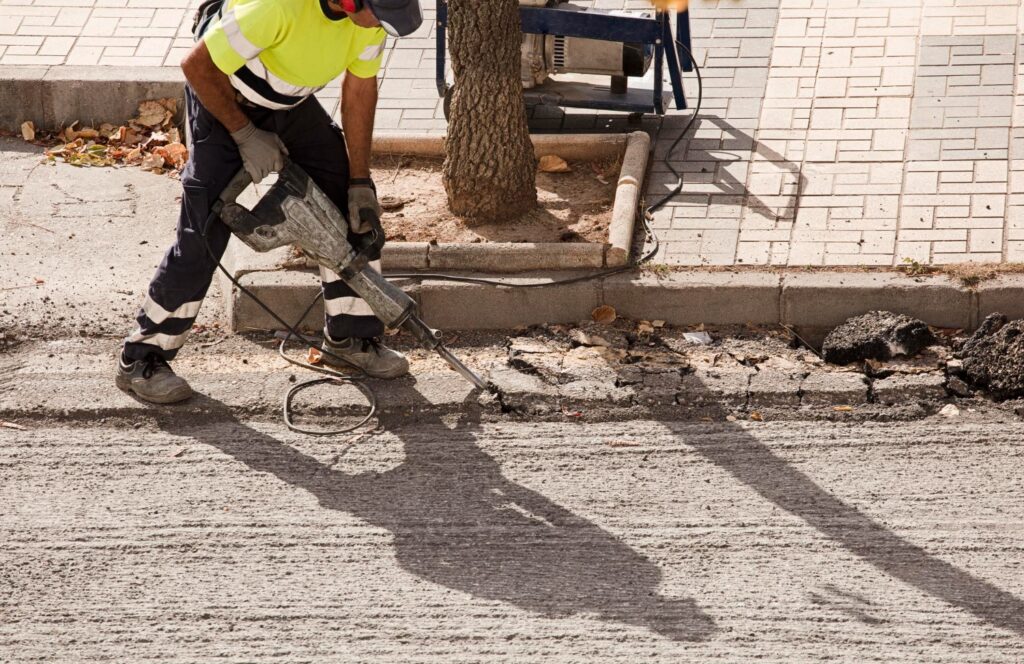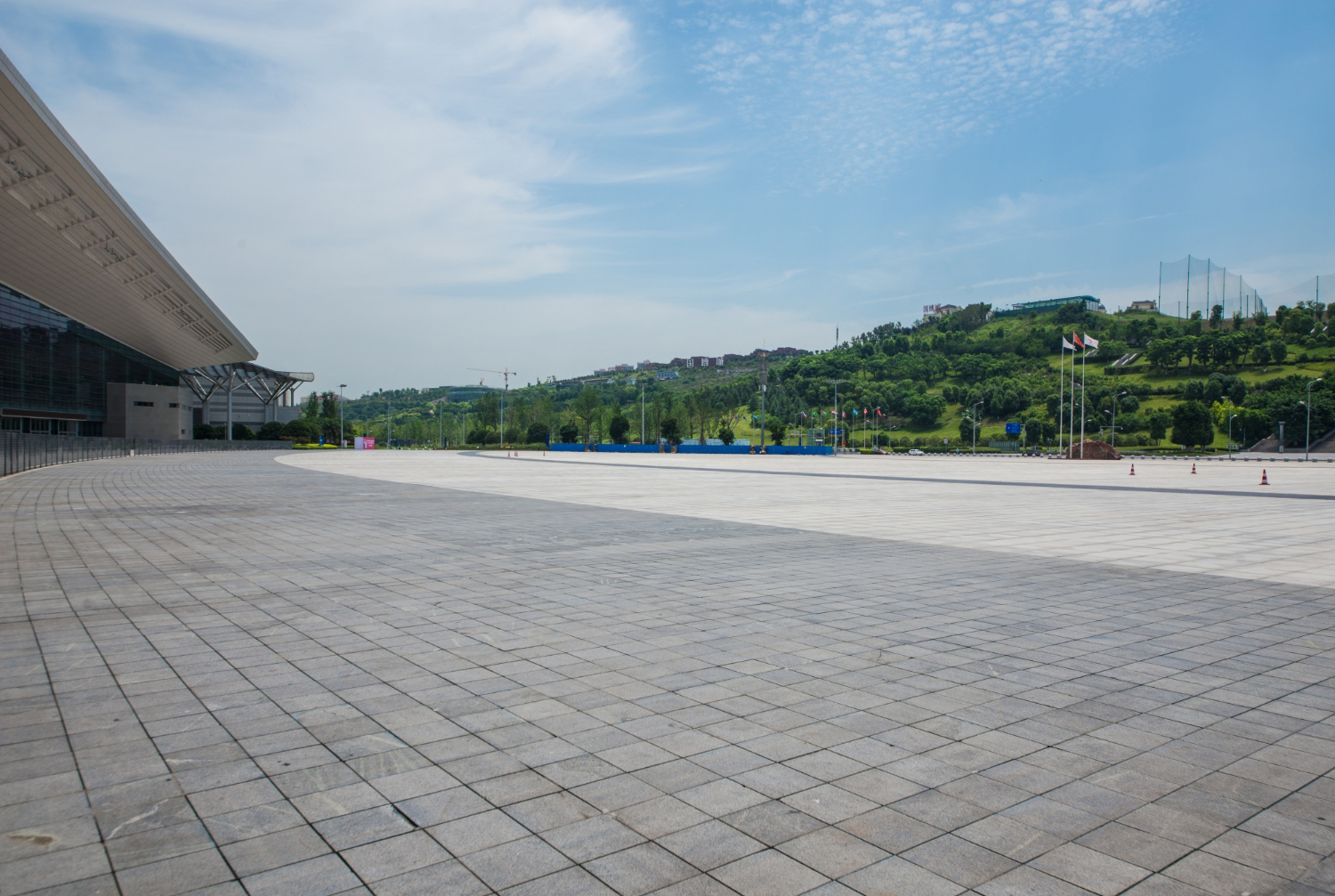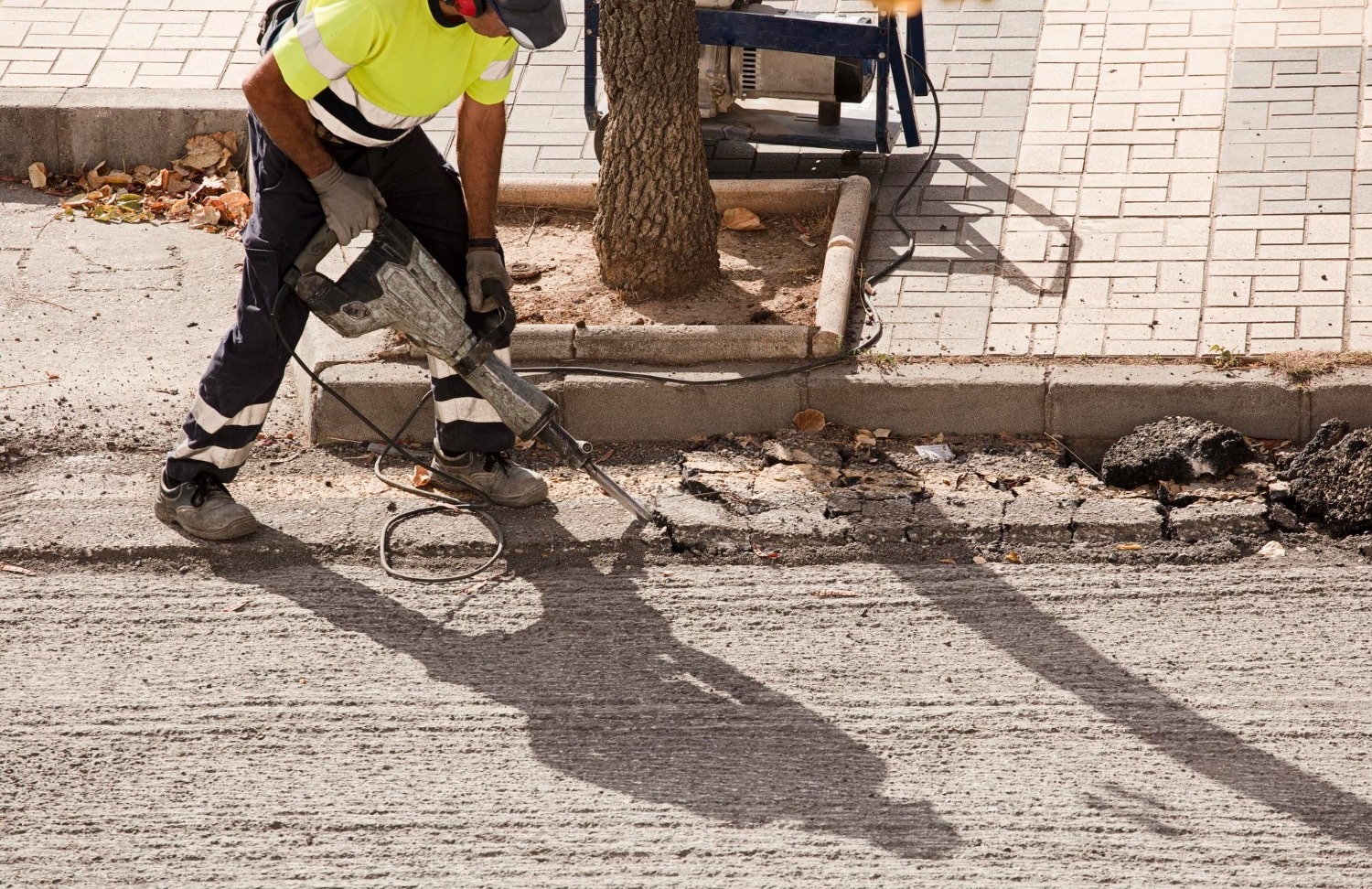Maintaining the sidewalks around your home or property is crucial for a variety of reasons. First and foremost, it ensures the safety of those who use the sidewalks. Cracks, uneven surfaces, and other damage can pose a tripping hazard, leading to potential injuries.
Additionally, well-maintained sidewalks contribute to the overall curb appeal of your property. A well-kept sidewalk can enhance the aesthetic value of your home and make a positive impression on visitors or potential buyers.
Furthermore, regular maintenance can help prevent more extensive and costly repairs down the line. By addressing issues early on, you can avoid the need for major overhauls in the future.
In order to properly maintain your sidewalks, it’s important to be able to identify any existing damage or potential issues.
This can be done through regular inspections and assessments. By understanding what to look for, you can catch problems early and address them before they worsen. Additionally, being able to identify sidewalk issues will help you determine whether a DIY repair is feasible or if it’s time to call in a professional.
Overall, understanding the importance of sidewalk maintenance and being able to assess any damage are crucial first steps in keeping your sidewalks in good condition.
Key Takeaways
- Regular sidewalk maintenance is important for safety and curb appeal
- Cracks, uneven surfaces, and drainage issues are common sidewalk problems
- Basic tools and materials like concrete mix and a trowel are needed for DIY repairs
- Properly sealing and finishing the repair is crucial for long-term durability
- Regular cleaning, sealing, and addressing issues promptly can prevent costly repairs
Assessing the Damage: How to Identify Sidewalk Issues
When it comes to assessing the damage to your sidewalks, there are several key issues to look out for. One common problem is cracking, which can occur due to a variety of factors such as weathering, tree roots, or heavy foot traffic.
Additionally, uneven surfaces can pose a significant hazard and should be addressed promptly. Other issues to watch out for include spalling, which is when the surface of the concrete begins to flake or chip away, and settlement, which occurs when the soil beneath the sidewalk shifts, causing it to sink or become uneven.
By being able to identify these and other issues, you can determine the best course of action for repairing your sidewalks.
In order to properly assess the damage to your sidewalks, it’s important to have the right tools and materials on hand. A few essential tools for this task include a tape measure, level, and chalk line for measuring and marking any uneven surfaces. Additionally, a hammer and chisel may be necessary for removing any loose or damaged concrete.
When it comes to materials, you’ll likely need concrete mix, bonding adhesive, and a sealant for finishing the repair. By having these tools and materials ready, you’ll be better equipped to accurately assess the damage to your sidewalks and begin the repair process.
Tools and Materials Needed for DIY Sidewalk Repair
When it comes to DIY sidewalk repair, having the right tools and materials is essential for a successful outcome. Some of the basic tools you’ll need include a trowel for applying concrete mix, a broom for cleaning the surface, and a bucket for mixing the concrete.
Additionally, a level will be necessary for ensuring that any repaired areas are even and properly aligned with the rest of the sidewalk. In terms of materials, you’ll need concrete mix, which can be purchased at most hardware stores, as well as bonding adhesive to help the new concrete adhere to the existing surface. Finally, a sealant will be necessary for finishing the repair and protecting it from future damage.
In addition to these basic tools and materials, it’s important to have proper safety equipment on hand when undertaking any DIY repair project. This may include gloves, safety goggles, and a dust mask to protect yourself from any potential hazards.
By having the right tools, materials, and safety equipment ready, you’ll be better prepared to tackle any sidewalk repair project with confidence.
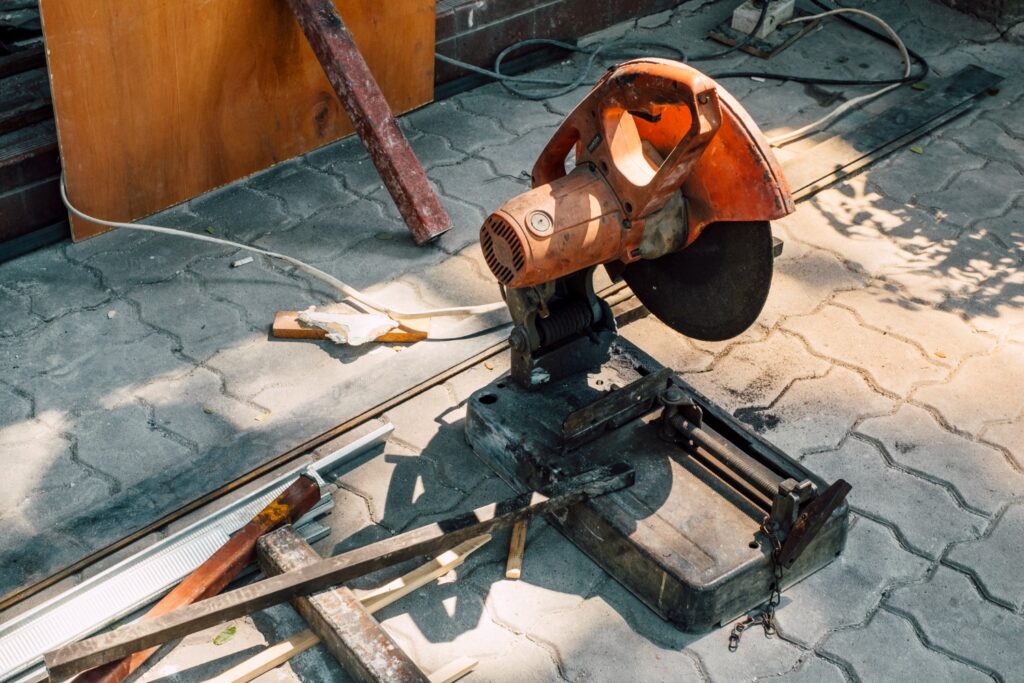
Step-by-Step Guide to Repairing Cracks and Uneven Surfaces
| DIY Sidewalk Repair Metrics | 2019 | 2020 | 2021 |
|---|---|---|---|
| Total DIY Repairs | 150 | 200 | 180 |
| Materials Cost | 500 | 700 | 600 |
| Time Spent (hours) | 300 | 400 | 360 |
Repairing cracks and uneven surfaces on your sidewalk can be a relatively straightforward process if you have the right tools and materials on hand. The first step is to thoroughly clean the damaged area with a broom or brush to remove any debris or loose concrete.
Next, use a hammer and chisel to carefully remove any loose or damaged concrete from the area. Once the surface is clean and free of debris, apply bonding adhesive to help the new concrete adhere to the existing surface.
After applying the bonding adhesive, mix the concrete according to the manufacturer’s instructions and apply it to the damaged area using a trowel. Be sure to smooth out the surface and use a level to ensure that it’s even with the rest of the sidewalk.
Once the new concrete has been applied, allow it to dry according to the manufacturer’s instructions before applying a sealant to finish the repair. By following these steps and using the right tools and materials, you can effectively repair cracks and uneven surfaces on your sidewalk.
Tips for Properly Sealing and Finishing Your Sidewalk Repair
Properly sealing and finishing your sidewalk repair is crucial for protecting it from future damage and ensuring its longevity. Once the repaired area has dried completely, apply a sealant to protect it from moisture, UV rays, and other potential sources of damage.
This will help prevent future cracking, spalling, or other issues that could compromise the repair. Additionally, applying a sealant will give the repaired area a more uniform appearance and help it blend in with the rest of the sidewalk.
In addition to sealing the repaired area, it’s important to take preventative measures to keep your sidewalks in good condition. This may include regular cleaning and maintenance, as well as addressing any issues as soon as they arise.
By staying proactive and addressing any damage early on, you can prevent more extensive repairs down the line. Overall, properly sealing and finishing your sidewalk repair is essential for protecting it from future damage and ensuring its longevity.
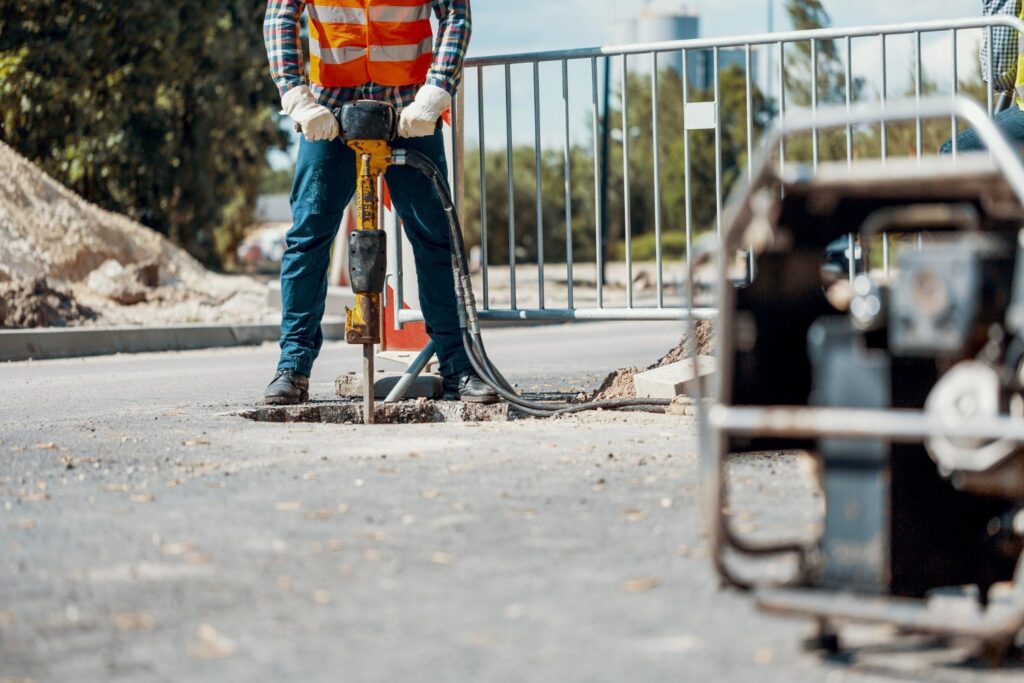
Preventative Maintenance: How to Keep Your Sidewalk in Good Condition
In addition to repairing any existing damage, preventative maintenance is crucial for keeping your sidewalks in good condition. Regular cleaning is one of the most important aspects of preventative maintenance.
This may include sweeping away debris, removing any weeds or vegetation that could cause damage, and cleaning up any spills or stains that could compromise the surface of the sidewalk. Additionally, addressing any issues as soon as they arise is key for preventing more extensive damage down the line.
Another important aspect of preventative maintenance is addressing any potential hazards that could pose a safety risk. This may include trimming back overgrown vegetation that could obstruct the sidewalk or cause it to become uneven.
Additionally, addressing any drainage issues that could lead to pooling water or erosion is crucial for preventing damage to your sidewalks. By staying proactive and addressing any potential issues early on, you can keep your sidewalks in good condition and prevent more extensive repairs in the future.
When to Call a Professional: Knowing When DIY Repair Isn’t Enough
While many sidewalk repairs can be tackled as DIY projects, there are certain situations where it’s best to call in a professional. If you’re dealing with extensive damage or structural issues such as significant settlement or heaving, it’s best to consult with a professional who has experience in handling these types of repairs.
Additionally, if you’re unsure about how to properly assess or address any damage to your sidewalks, it’s best to seek professional guidance.
Furthermore, if you’re dealing with any legal or regulatory issues related to sidewalk maintenance or repairs, it’s important to consult with a professional who can provide guidance on how to proceed. This may include obtaining permits or meeting specific requirements related to sidewalk repairs in your area. Overall, knowing when DIY repair isn’t enough is crucial for ensuring that your sidewalks are properly maintained and in compliance with any relevant regulations.
In conclusion, maintaining your sidewalks is crucial for ensuring their safety and longevity. By understanding the importance of sidewalk maintenance and being able to assess any damage that may arise, you can take proactive steps to keep your sidewalks in good condition.
With the right tools and materials on hand, you can effectively tackle DIY sidewalk repairs such as cracks and uneven surfaces. Properly sealing and finishing your repairs is essential for protecting them from future damage, while preventative maintenance can help keep your sidewalks in good condition over time. However, there are certain situations where it’s best to call in a professional for more extensive repairs or guidance on regulatory issues related to sidewalk maintenance.
By following this ultimate guide to DIY sidewalk repair, you can ensure that your sidewalks are safe, well-maintained, and contribute positively to the overall curb appeal of your property.
FAQs
What are the common issues with sidewalks that require repair?
Common issues with sidewalks that require repair include cracks, uneven surfaces, potholes, and crumbling edges. These issues can pose safety hazards and should be addressed promptly.
What tools are needed for DIY sidewalk repair?
Tools needed for DIY sidewalk repair may include a sledgehammer, chisel, pry bar, level, trowel, concrete mix, wheelbarrow, gloves, safety goggles, and a broom. The specific tools required may vary depending on the nature of the repair.
What are the steps for repairing a cracked sidewalk?
The steps for repairing a cracked sidewalk typically involve cleaning the crack, chiseling the edges, applying a bonding agent, and filling the crack with a concrete mix. The filled crack should then be smoothed and leveled with a trowel.
How can I ensure a professional-looking finish for my DIY sidewalk repair?
To ensure a professional-looking finish for DIY sidewalk repair, it is important to properly prepare the area, use high-quality materials, follow the manufacturer’s instructions for any products used, and take the time to carefully smooth and level the repaired area.
When should I consider hiring a professional for sidewalk repair?
It may be necessary to hire a professional for sidewalk repair if the damage is extensive, if there are underlying issues with the sidewalk’s foundation, or if the repair requires specialized equipment or expertise. Additionally, some local regulations may require certain repairs to be performed by licensed professionals.

